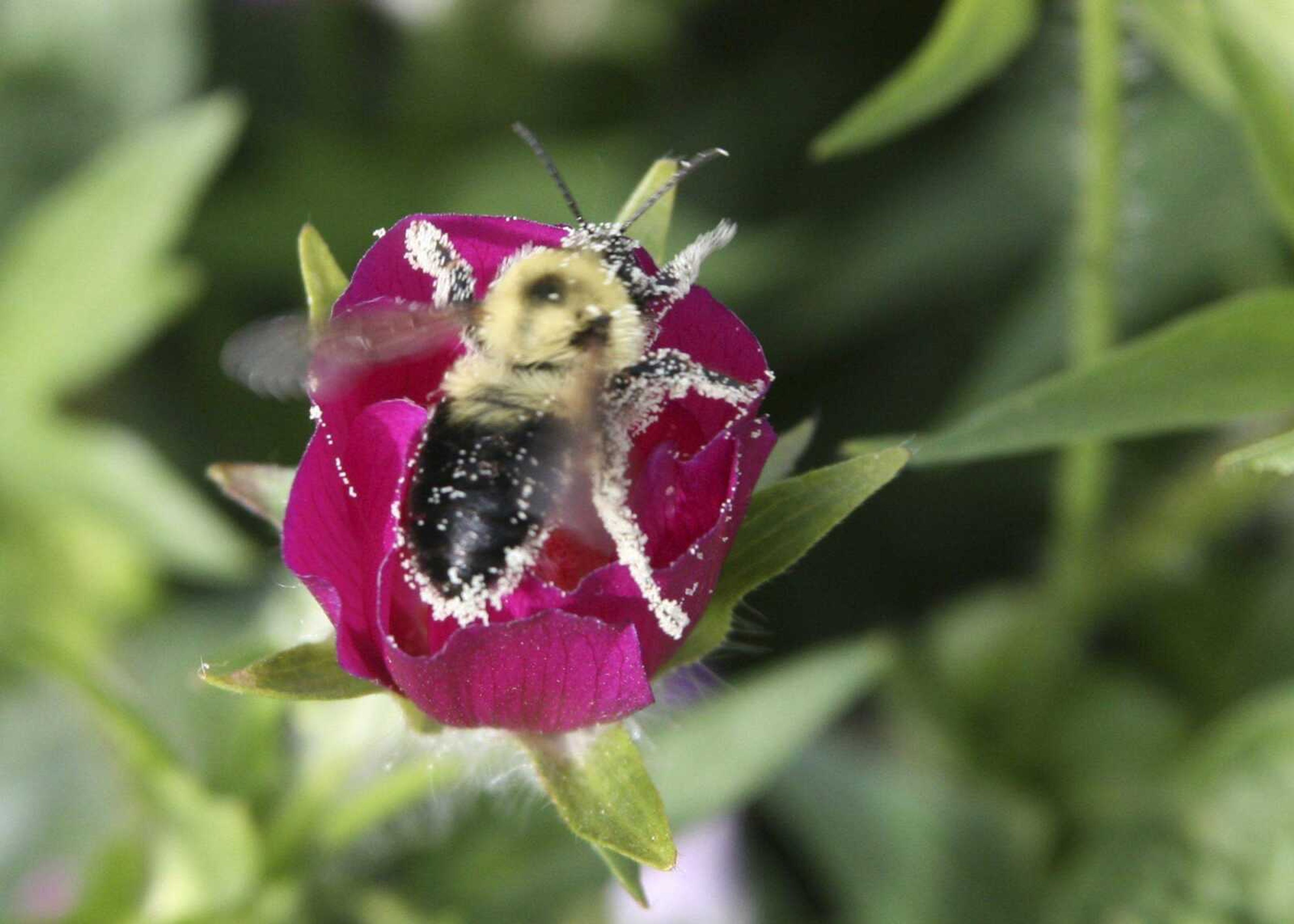A busy and beneficial insect
This column originally appeared as a Discover Nature blog on semissourian.com/blogs. The large carpenter bee rolled around inside a purple poppy mallow flower with intensity as I watched it outside my office. I thoroughly enjoyed watching him roll and turn and roll again, as he loosened the flower's pollen and bathed in it...
This column originally appeared as a Discover Nature blog on semissourian.com/blogs.
The large carpenter bee rolled around inside a purple poppy mallow flower with intensity as I watched it outside my office. I thoroughly enjoyed watching him roll and turn and roll again, as he loosened the flower's pollen and bathed in it.
The perception that stinging insects are instinctively aggressive at any time and place is wrong and blinds us to the role they play in nature's balance. Many stinging insect species, like the carpenter bee, are essential for the pollination of fruits, vegetables and flowers. The honeybee is the major pollinator of many field crops and almost all tree fruits. It is the world's most beneficial insect, according to the Missouri Department of Conservation, and has become the state insect of Missouri. Other stinging insects are important predators of pest insects that eat both wild and cultivated plants.
However, a sting from a bee, wasp or hornet is never a pleasant experience. Though Missouri has hundreds of species of wasps and bees, it helps to realize only a few of them can deliver painful stings and that many wasps and bees are too small to hurt a person. According to the Missouri Department of Conservation, a good rule of thumb is the larger the bee or wasp, the more painful the sting. Also, solitary bees or wasps are not as much of a threat as those that nest in large groups.
Bees are usually thick-bodied and hairy. The hairs make them better pollinators because they grab on easily to tiny dustlike pollen, which you can see in the case of our carpenter bee above. Bees typically sting only in self-defense. The honeybee's stinger is barbed and remains in the skin, which is why a bee dies after a sting.
Wasps have a slender waist and smooth body. They build papery nests by mixing wood pulp with their saliva. Wasps are predators of insects and other small animals, but some, especially yellow jackets, are attracted to sweets. Yellow jackets are probably the most aggressive wasp in Missouri and can sting repeatedly, according to the Conservation Department. The bald-faced hornet, which builds large, hanging nests, is actually a wasp.
Taking a few precautions and using common sense when outdoors can reduce the risk of being stung. Watch for nests. Always wear shoes when outdoors and wear light-colored clothing. Avoid wearing perfumes or scented hairsprays or lotions when outdoors. If a bee or wasp is near you, move slowly away from it; if one lands on you, gently brush or coax it off. Never swat at a wasp or bee and certainly don't allow children to throw rocks at paper wasp or hornet nests.
For more information about bees and wasps, check out www.MissouriConservation.org.
Candice Davis is the media specialist for the Missouri Department of Conservation's Southeast and Ozark regions. Though raised to appreciate the Missouri outdoors, Candice is discovering nature on a new and exciting level as she gets up close and personal with snakes, insects and Southeast Missouri's diverse landscape. Her goal is to share her learning experiences and show Southeast Missourians how they're directly connected to their land.
Connect with the Southeast Missourian Newsroom:
For corrections to this story or other insights for the editor, click here. To submit a letter to the editor, click here. To learn about the Southeast Missourian’s AI Policy, click here.









